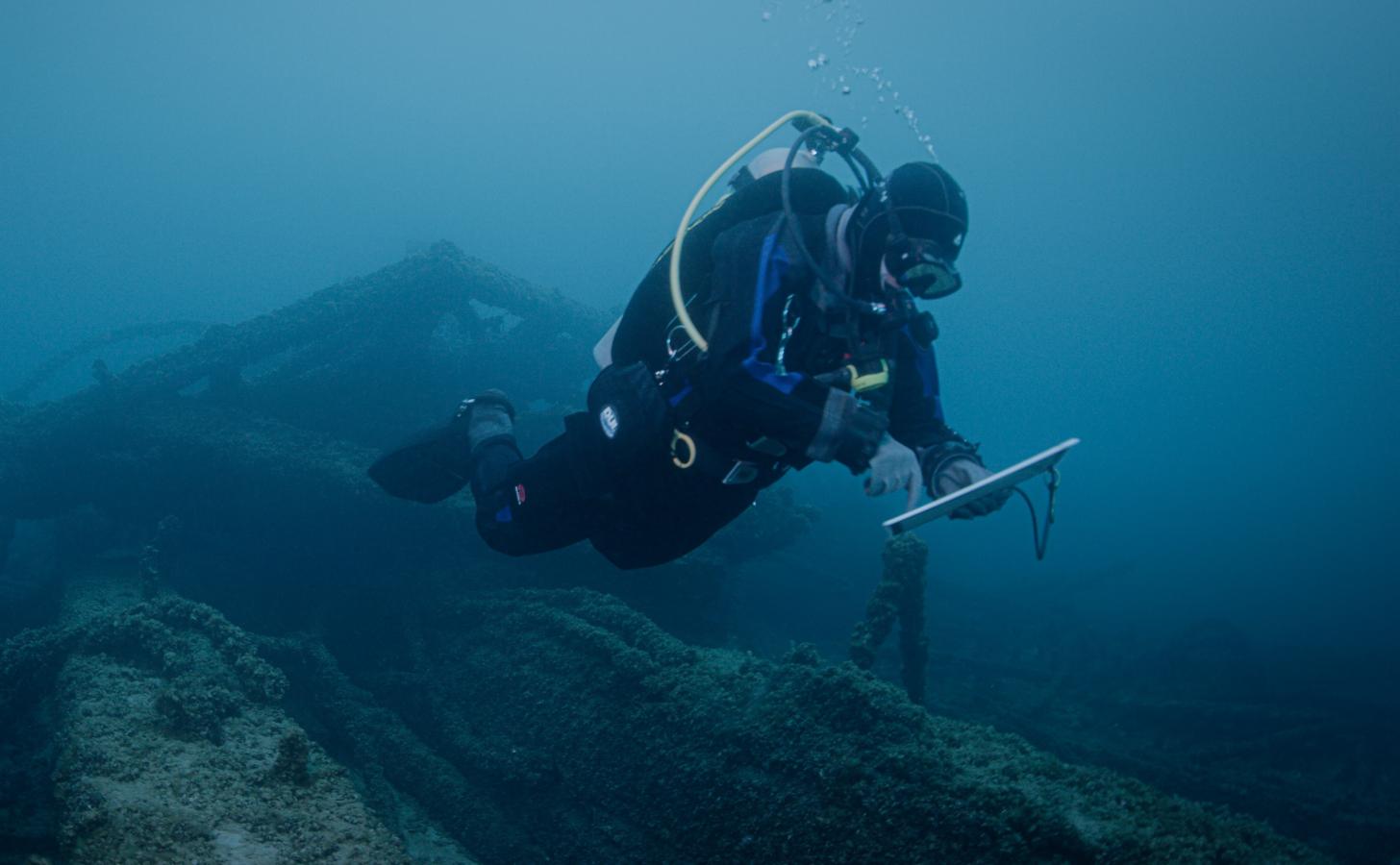
With more than 350 divers, NOAA has more divers than any other U.S. civilian federal agency. NOAA divers conduct work and research across all NOAA line offices, however most diving occurs within NOAA Fisheries, the National Ocean Service (NOS), and NOAA Marine and Aviation Operations.
Because divers work on NOAA mission-related projects, the majority of dives are scientific in nature. NOAA divers also engage in working (OSHA-regulated) dives and participate in numerous training and proficiency dives.
The NOAA Diving Program (NDP) provides the guidelines and training for all NOAA divers. This includes employees, volunteers, and contractors diving in support of NOAA’s mission. The NDP also oversees all diving that is performed on behalf of NOAA’s scientific research and operations.
The NDP and NOAA Diving Center are housed within the NOAA Office of Marine and Aviation Operations. The NOAA Diving Center, which serves as the NDP’s training, is located in Seattle, Washington.
Averaging about 12,000 dives per year in the past 5 years, the NDP has consistently maintained an excellent diving safety record. This safety record can be attributed to three guiding principles:
- thorough training,
- adherence to established standards and procedures, and
- use of top quality, well maintained equipment.
The NDP provides the leadership, organization, and staff to apply these principles through its numerous training programs, administrative procedures, and Standardized Equipment Program (SEP).
Specifically, the NDP engages in the following tasks:
- Establishing policies, rules, and regulations for NOAA divers.
- Supplying safe and well maintained diving equipment through the Standardized Equipment Program (SEP).
- Providing expertise in diving medicine: annually assessing medical fitness to dive for all NOAA divers, training divers and personnel on diving medical emergency procedures, providing medical advice during diving medical emergencies and undertaking medical research pertaining to diving issues.
- Inspecting diving unit facilities and observing NOAA divers on site to ensure compliance with NOAA diving standards and regulations.
- Investigating and implementing new diving technologies and techniques.
- Fostering working relationships with other diving programs.
The NDP is governed by the NOAA Diving Control and Safety Board (NDCSB). This is a regulatory and reviewing body composed of selected divers from each line office and key members of the NOAA Diving Program administration, such as the NOAA Diving Program Manager, NOAA Diving Center Manager, Diving Safety Officer, and Diving Medical Officer. This governing body is the ultimate authority in reviewing program needs, setting policy, and advising the field on operational diving matters. They are assisted in their task by experts from the diving medical and technical diving communities.
NOAA divers work underwater to further NOAA’s mission of “Science, Service, and Stewardship.”
Data collected by NOAA divers are regularly published in peer-reviewed journals by NOAA scientists and their colleagues from other well-respected research institutions. Long-term data sets collected by NOAA divers over the years have, and continue to provide scientists, policy-makers, and the greater public with invaluable and reliable information on which to base important decisions regarding our commercial and environmental interests in the oceans, coasts, and waterways both nationally and internationally.
NOAA divers work throughout the oceans and coastal waters of the world in conditions varying from the crystal clear water of a pristine marine sanctuary to the murky and polluted water of a congested harbor.
They help keep coastal communities safe and allow shipping lines to remain navigable (by installing water level gauges that indicate navigable depths or warn of potential Tsunami surges); help the fisheries industry to continue to have healthy and abundant stocks by re-stocking and monitoring fish abundance; monitor and replace coral reefs; help recreational divers in our Marine Sanctuaries find their way by installing buoys; remove trash from our oceans; and a myriad other tasks.
Typical dives might involve (in no particular order):
- Conducting surveys of fish, coral, and sea floor life and composition.
- Removing marine trash. Identifying and removing illegal trapping and/or fishing devices.
- Responding to ship groundings, oil spills, and other sudden, catastrophic events that threaten marine life and habitat.
- Documenting and preserving submerged heritage sites, including archeological structures such as ships from World War II.
- Helping to restore local crab and fish abundance through hatchery programs.
- Installing and maintaining tide-level gauges in harbors, bays, and shipping channels to aid in navigation and to help develop emergency warning systems (tsunamis).
- Testing new underwater equipment used in scientific research.
- Cleaning and repairing ship hulls and solving underwater mechanical problems, such as unfouling ropes from a ship’s propellers.
- Collecting data and/or specimens and installing acoustic tracking devices.
- Performing surgery on fish to embed tracking devices.
- Testing prototype by-catch reduction devices to protect turtles and fish.
- Tending corals in underwater nurseries.
- Detection, documentation, and collection of information regarding coral bleaching events.
- Removing invasive or over-abundant species such as lionfish or crown-of-thorns sea stars.
- Installing and maintaining boat mooring sites at National Marine Sanctuaries to reduce anchor damage and promote safe boating and diving practices.
- Practicing and learning diving skills and rescue procedures.

